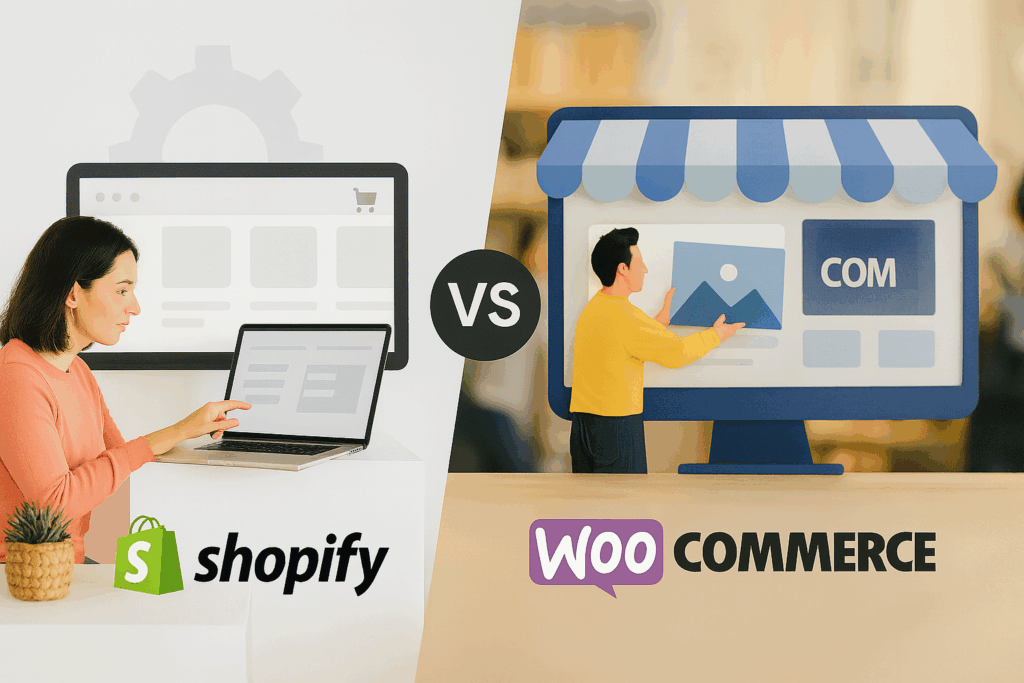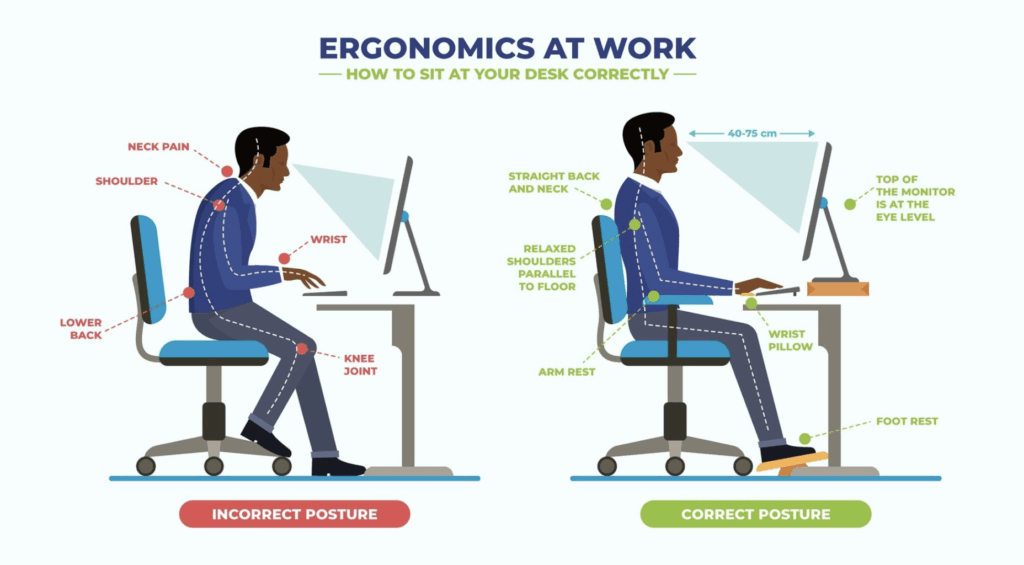WooCommerce vs Shopify: Why Many Sellers Choose Shopify in 2025
Choosing the right e-commerce platform can greatly impact a business’s growth. When comparing WooCommerce vs Shopify, the best choice often depends on the individual seller’s needs. However, in 2025, more business owners are turning to Shopify due to its simplicity, reliability, and scalability.
When paired with powerful tools like VidAU, which transforms product pages into scroll-stopping videos, Shopify becomes more than just a store; it becomes a full sales engine.
Why This WooCommerce vs Shopify Comparison Matters in 2025
As e-commerce continues to grow in 2025, sellers are facing new challenges, including how to stand out, scale their content, and create seamless online experiences. Platforms like WooCommerce and Shopify remain the go-to options, but they offer distinctly different paths.
Sellers choose WooCommerce for its flexibility, but they prefer Shopify for its speed and structured layout. As content creation tools like VidAU gain popularity, understanding the differences between these platforms becomes even more important.
Real-World Comparison of Both Platforms
Platform specs and features can overwhelm sellers fast. So this comparison breaks down how WooCommerce vs Shopify perform in real-world use, especially with content, marketing, and daily operations.
Starting with WooCommerce – The Promise of Flexibility
WooCommerce is an excellent choice for sellers seeking full customization. Built on WordPress, it offers extensive control over your online store. However, this level of control also means that you need to manage updates, select reliable plugins, and sometimes hire developers. Technically skilled users can get great value from it, but businesses that need to move quickly often find it slows them down.
Trying Shopify – From Hesitation to Relief
Shopify provides a plug-and-play solution with minimal setup friction. It’s hosted, secure, and includes many essentials out of the box. Sellers using Shopify often find relief in the platform’s intuitive nature and how easily the e-commerce shop integrates with tools like VidAU for product video generation.
Shopify Pricing vs WooCommerce Pricing: Breakdown (Real Costs)
One of the most common questions among new store owners is: What’s the real cost difference between WooCommerce and Shopify? The answer may surprise you.
Shopify Pricing: Plans, Apps, and Add-ons
Shopify pricing starts at $27/month for the Basic plan, which includes hosting, an SSL certificate, and unlimited products. Many sellers spend an additional $20–50/month on apps to expand their store’s functionality, but these apps often save time and increase conversions. VidAU, for example, can be integrated to turn product links into marketing videos, reducing creative costs.
WooCommerce Pricing: Hosting, Themes, and Plugin Costs
Although WooCommerce is advertised as “free,” WooCommerce pricing adds up quickly. Expect to pay $10–$ 30 per month for hosting, $50–$ 150 for premium themes, and even more for plugins that handle SEO, payments, and security. And if plugins conflict? That could mean additional developer fees.
Total Cost of Ownership: What Sellers Spend
When comparing total ownership costs, Shopify tends to offer more value for businesses focused on growth. It’s not just about cheaper hosting; it’s about reducing the hours spent troubleshooting, fixing bugs, or managing plugins.
Setup & Usability: Which Platform Is Easier for Sellers?

First impressions matter. How easy is it to launch and manage your store?
Shopify often wins here by offering an all-in-one experience. WooCommerce, while powerful, demands more setup and upkeep.
Shopify’s Guided Setup and App Ecosystem
Shopify’s dashboard is user-friendly and easy to learn. Its ecosystem of apps simplifies everything from inventory management to marketing. Additionally, Shopify integrates seamlessly with automation tools like VidAU, allowing sellers to create videos without needing editing skills.
WooCommerce’s Learning Curve and Technical Hurdles
WooCommerce relies on WordPress, meaning users must install and manage hosting, themes, and plugins. Tasks like backups, updates, and bug fixes fall on the store owner, making the learning curve steeper, especially for non-technical teams.
Performance, Support & Reliability: Shopify Wins Here
When a store is slow or crashes, it directly affects revenue. That’s why platform stability and performance should never be an afterthought.
Website Speed and Mobile Optimization
Shopify runs on a fast, global infrastructure with mobile-optimized templates. Load times are consistent, and stores are automatically responsive. WooCommerce’s performance depends heavily on your chosen host and how well the site is optimized.
Customer Support and Crisis Resolution
Shopify offers 24/7 support via chat, email, and phone. It’s fast and dependable. In contrast, WooCommerce support is decentralized; issues with plugins or themes often mean contacting different developers, which can delay resolution during urgent moments.
WooCommerce Alternatives: When It Makes Sense to Choose Something Else
WooCommerce is a strong platform, but it isn’t ideal for everyone. Many businesses eventually seek WooCommerce alternatives that are easier to manage and scale.
Advanced Features WooCommerce Offers
It is unmatched in flexibility. From custom checkout flows to personalized product types, developers can build just about anything. It’s ideal for businesses with unique workflows or niche product logic.
Why Sellers Consider Other WooCommerce Alternatives
As business needs grow, so does the demand for speed, automation, and visual content. Shopify stands out as a WooCommerce alternative that simplifies store management and marketing, especially when paired with VidAU for on-demand video generation.
Why Many Sellers Fully Switched to Shopify (and Why It Works)
As sellers mature, many outgrow the complexity of WooCommerce and seek platforms that simplify operations while supporting growth.
What Shifts the Decision
The switch usually happens when performance issues, plugin conflicts, or high setup costs start interfering with business. Shopify removes those blockers and helps sellers focus on what matters: converting customers and growing revenue.
The Final Push: Reliability, Speed, and Support
Shopify’s stable infrastructure, world-class support, and automation-friendly environment (including video tools like VidAU) make it a favorite for brands that want to move fast and stay focused.
Conclusion
WooCommerce vs Shopify: While WooCommerce offers great flexibility, Shopify provides clarity, consistency, and scale. From Shopify pricing and performance to content automation and support, Shopify wins across key categories, especially when integrated with creative tools like VidAU.
For sellers in 2025 who want to spend less time managing their store and more time growing it, Shopify stands out as the smarter, more sustainable choice.
FAQs
1. Is Shopify better than WooCommerce in 2025?
Yes. Shopify offers reliable infrastructure, built-in support, and seamless integration with tools like VidAU for content creation, making it ideal for growth-focused sellers.
2. What are the real differences in Shopify pricing vs WooCommerce pricing?
Shopify pricing is transparent and bundled with hosting, while WooCommerce pricing is flexible but unpredictable due to plugin and hosting costs.
3. Why do sellers switch from WooCommerce to Shopify?
Ease of use, speed, reliability, and built-in marketing tools often drive the switch—especially for businesses scaling quickly.
4. Are there WooCommerce alternatives other than Shopify?
Yes, including BigCommerce, Wix, and Squarespace. Still, Shopify remains one of the top WooCommerce alternatives due to its scalability and support ecosystem.
5. Can VidAU be used with both WooCommerce and Shopify?
Yes. VidAU works best with Shopify, enabling direct product-to-video conversion. It can also be used with WooCommerce by manually entering product URLs.





